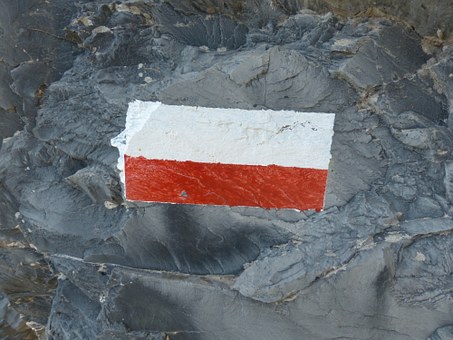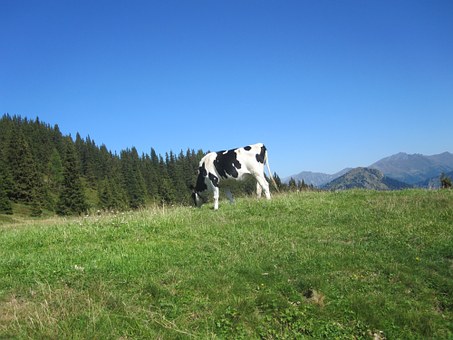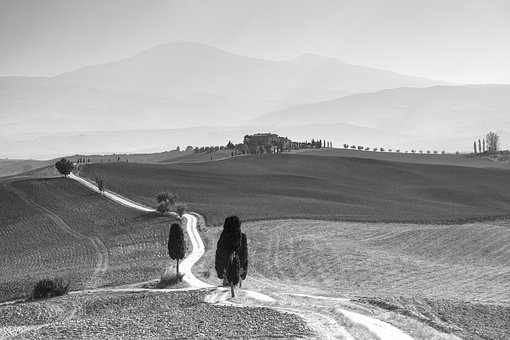Trip Hammer

Early history
Early historyChina
Hydraulic powered trip hammer set, illustration from the Tiangong Kaiwu encyclopedia of 1637, written by Song Yingxing (15871666)

In ancient China, the trip hammer evolved out of the use of the pestle and mortar, which in turn gave rise to the treadle-operated tilt-hammer (Pinyin: dui; Wade-Giles: tui). The latter was a simple device employing a lever and fulcrum (operated by pressure applied by the weight of one's foot to one end), which featured a series of catches or lugs on the main revolving shaft as well. This device enabled the labor of pounding, often in the decorticating and polishing of grain, and avoided manual use of pounding with hand and arm. Although historians assert that its origins may span as far back as the Zhou Dynasty (1050 BC221 BC), the earliest texts to describe the device are the Ji Jiu Pian dictionary of 40 BC, Yang Xiong's text known as the Fangyan of 15 BC, as well as the Xin Lun written by Huan Tan about 20 AD (during the usurpation of Wang Mang). The latter book states that the legendary mythological king known as Fu Xi was the one responsible for the pestle and mortar (which evolved into the tilt-hammer and then trip hammer device). Although the author speaks of the mythological Fu Xi, a passage of his writing gives hint that the waterwheel and trip-hammer were in widespread use by the 1st century AD in China (for Chinese metallurgy with water-power, see Du Shi) (Wade-Giles spelling):
Fu Hsi invented the pestle and mortar, which is so useful, and later on it was cleverly improved in such a way that the whole weight of the body could be used for treading on the tilt-hammer (tui), thus increasing the efficiency ten times. Afterwards the power of animalsonkeys, mules, oxen, and horsesas applied by means of machinery, and water-power too used for pounding, so that the benefit was increased a hundredfold.
With his description, it is seen that the out-of-date Chinese term for pestle and mortar (dui, tui) would soon be replaced with the Chinese term for the water-powered trip-hammer (Pinyin: shui dui; Wade-Giles: shui tui). The Han Dynasty scholar and poet Ma Rong (79166 AD) mentioned in one of his poems of hammers 'pounding in the water-echoing caves'. As described in the Hou Han Shu, in 129 AD the official Yu Xu gave a report to Emperor Shun of Han that trip hammers were being exported from Han China to the Western Qiang people by way of canals through the Qilian Mountains. In his Rou Xing Lun, the government official Kong Rong (153208 AD) remarked that the invention of the trip hammer was an excellent example of a product created by intelligent men during his own age (comparing the relative achievements of the sages of old). During the 3rd century AD, the high government official and engineer Du Yu established the use of combined trip hammer batteries (lian zhi dui), which employed several shafts that were arranged to work off one large waterwheel. In Chinese texts of the 4th century, there are written accounts of men possessing and operating hundreds of trip hammer machines, such as the venerable mathematician Wang Rong (died 306 AD), Deng Yu (died 326 AD), and Shi Chong (died 300 AD), responsible for the operation of hundreds of trip hammers in over thirty governmental districts throughout China. There are numerous references to trip hammers during the Tang Dynasty (618907 AD) and Song Dynasty (9601279), and there are Ming Dynasty (13681644) references that report the use of trip hammers in papermills of Fujian Province.
Although Chinese trip hammers in China were sometimes powered by the more efficient vertical-set waterwheel, the Chinese often employed the horizontal-set waterwheel in operating trip hammers, along with recumbent hammers. The recumbent hammer was found in Chinese illustrations by 1313 AD, with the publishing of Wang Zhen's Nong Shu book on ancient and contemporary (medieval) metallurgy in China. There were also illustrations of trip hammers in an encyclopedia of 1637, written by Song Yingxing (15871666).
Greco-Roman world
The main components for water-powered trip hammers - water wheels, cams, and hammers - were already known in Hellenistic times. Ancient cams are in evidence in early water-powered automata from the third century BC. A passage in the Natural History of the Roman scholar Pliny (NH 18.97) indicates that water-driven pestles had become fairly widespread in Italy by the first century AD: "The greater part of Italy uses an unshod pestle and also wheels which water turns as it flows past, and a trip-hammer [mola]". These trip-hammers were used for the pounding and hulling of grain. Grain-pounders with pestles, as well as ordinary watermills, are also attested as late as the middle of the fifth century in a monastery founded by Romanus of Condat in the remote Jura region, indicating that the knowledge of trip hammers continued into the early Middle Ages. Apart from agricultural processing, archaeological evidence also strongly suggests the existence of trip hammers in Roman metal working. In Ickham in Kent, a large metal hammer-head with mechanical deformations was excavated in an area where several Roman water-mills and metal waste dumps have also been traced.
The widest application of trip hammers, however, seems to have occurred in Roman mining, where ore from deep veins was first crushed into small pieces for further processing. Here, the regularity and spacing of large indentations on stone anvils indicate the use of cam-operated ore stamps, much like the devices of later medieval mining. Such mechanically deformed anvils have been found at numerous Roman silver and gold mining sites in Western Europe, including at Dolaucothi (Wales), and on the Iberian peninsula, where the datable examples are from the 1st and 2nd century AD. At Dolaucothi, these trip-hammers were hydraulic-driven and possibly also at other Roman mining sites, where the large scale use of the hushing and ground sluicing technique meant that large amounts of water were directly available for powering the machines.
Medieval Near East
Both hydropowered and wind powered trip hammers were used in the medieval Near East. In order to adapt water wheels and windmills for gristmilling purposes, cams were used for raising and releasing trip hammers to fall on a material. Watermills and windmills with trip hammers were used for grinding grain and other seeds to produce meals, and many other industrial uses such as fulling cloth, husking rice, papermaking in paper mills, pulping sugarcane, and crushing metallic ores before extraction.
Medieval Europe
Ore stamp mill in Georg Agricola's De re metallica (1556)
Water-powered and mechanised trip hammers reappeared in medieval Europe by the 12th century. Their use was described in medieval written sources of Styria (in modern-day Austria), written in 1135 and another in 1175 AD. Both texts mentioned the use of vertical stamp mills for ore-crushing. Medieval French sources of the years 1116 and 1249 both record the use of mechanised trip hammers used in the forging of wrought iron. Medieval European trip hammers by the 15th century were most often in the shape of the vertical pestle stamp-mill, although they employed more frequent use of the vertical waterwheel than earlier Chinese versions (which often used the horizontal waterwheel). The well-known Renaissance artist and inventor Leonardo de Vinci often sketched trip hammers for use in forges and even file-cutting machinery, those of the vertical pestle stamp-mill type. The oldest depicted European illustration of a martinet forge-hammer is perhaps the Historia de Gentibus Septentrionalibus of Olaus Magnus, dated to 1565 AD. In this woodcut image, there is the scene of three martinets and a waterwheel working wood and leather bellows of the Osmund bloomery furnace. The recumbrent hammer was first depicted in European artwork in an illustration by Sandrart and Zonca (dated 1621 AD).
Types
Most types of trip hammers were used, all requiring artificial power to lift them. They fall into two types, helve hammers and drop hammers.
Helve hammers
A helve hammer has the head mounted at the end of a recumbent helve. The choice of which of the kinds, listed below, should be used in a particular context may depend on the strain that its operation imposed on the helve. This was normally of wood, mounted in a cast iron ring (called the hurst) where it pivoted. However in the 19th century, when the heaviest helves were sometimes a single casting, incorporating the hurst.
Tilt hammer
The tail helve hammer or 'tilt hammer' has a pivot at the centre of the helve on which it is mounted, and is lifted by pushing the opposite end to the head downwards. In practice the head on such hammers seems to have been limited to one hundredweight (about 50kg), but a very rapid stroke rate was possible. This made it suitable for drawing iron down to small sizes suitable for the cutlery trades. There were therefore many such forges known as 'tilts' around Sheffield. They were also used in brass battery works for making brass (or copper) pots and pans. In battery works (at least) it was possible for one power source to operate several hammers.
Belly helve
The belly helve hammer was the kind normally found in a finery forge, used for making pig iron into forgeable bar iron. This was lifted by cams striking the helve between the pivot and the head. The head usually weighted quarter of a ton. This was probably the case because the strain on a wooden helve would have been too great if the head were heavier.
Nose helve
The nose helve hammer seems to have been unusual until the late 18th or early 19th century. This was lifted beyond the head. Surviving nosehelves and those in pictures appear to be of cast iron.
Drop hammers
In the drop hammer, the head is mounted on a vertical shaft, which is lifted artifically and falls by gravity.
Stamps
Main article: stamp mill
The stamp mill for breaking up ore has eben used since at least the 16th century. It consists of a number of iron stamps each mounted in a wooden pole or iron shaft, which are lifted successively by cams.
Drop hammers
The helve hammer was replaced (at least for the largest forgings0 by James Nasmyth's steam-powered drop hammer (invented in 1839 and patented in 1842. However by then forging had become less important for the iron industry, following the improvements to the rolling mill that went along with the adoption of puddling from the end of the 18th century. However hammers continueed to be needed for shingling.
References
^ a b c d e f Wilson, p.16.
^ Needham, Volume 4, Part 2, 183.
^ a b Needham, Volume 4, Part 2, 390.
^ Needham, Volume 4, Part 2, 184.
^ a b c d Needham, Volume 4, Part 2, 392.
^ Needham, Volume 4, Part 2, 393.
^ Needham, Volume 4, Part 2, 392-393.
^ a b Needham, Volume 4, Part 2, 394.
^ Needham, Volume 4, Part 2, 391-392.
^ a b c d e Needham, Volume 4, Part 2, 395.
^ Song, 91-93.
^ Wilson, p.22.
^ a b c d Wilson, pp. 21f.
^ a b Barry C. Burnham: "Roman Mining at Dolaucothi: The Implications of the 1991-3 Excavations near the Carreg Pumsaint", Britannia, Vol. 28 (1997), pp. 325-336 (333-335)
^ J. Wahl: "Tres Minas: Vorbericht ber die archologischen Ausgrabungen im Bereich des rmischen Goldbergwerks 1986/87", in H. Steuer and U. Zimmerman (eds): "Montanarchologie in Europa", 1993, p.123-152 (141; Fig.19)
^ Wilson, p. 21, Fn.110.
^ M.J.T. Lewis: "Millstone and Hammer: the Origins of Water Power", (1997), Section 2
^ Donald Routledge Hill, "Mechanical Engineering in the Medieval Near East", Scientific American, May 1991, pp. 64-69 (cf. Donald Routledge Hill, Mechanical Engineering)
^ a b c Needham, Volume 4, Part 2, 379.
^ For example at Abbeydale Industrial Hamlet
^ For example in the metalwork gallery in Birmingham Museum and Art Gallery
Bibliography
Burnham, Barry C.: "Roman Mining at Dolaucothi: The Implications of the 1991-3 Excavations near the Carreg Pumsaint", Britannia, Vol. 28 (1997), pp.325-336 (333-335)
Lewis, M.J.T.: "Millstone and Hammer: the Origins of Water Power" (1997)
Needham, Joseph: Science and Civilization in China: Volume 4, Part 2. (Taipei: Caves Books Ltd 1986).
Song, Yingxing, translated with preface by E-Tu Zen Sun and Shiou-Chuan Sun: T'ien-Kung K'ai-Wu: Chinese Technology in the Seventeenth Century. (University Park: Pennsylvania State University Press 1966).
Wilson, Andrew: "Machines, Power and the Ancient Economy", The Journal of Roman Studies, Vol. 92. (2002), pp.1-32 (16, 21f.)
External links
Wikimedia Commons has media related to: Trip hammers
vde
Metalworking
Smithing
Smiths
Blacksmith Bladesmith Coppersmith Goldsmith Gunsmith Locksmith Pewtersmith Silversmith Tinsmith Whitesmith
Processes
Forging Pattern welding Planishing Raising Sinking Swaging
Tools

Anvil Forge Fuller Hammer Hardy hole Hardy tools Pritchel Slack tub Steam hammer Swage block Trip hammer
Casting Fabrication Forming Jewellery Machining Metallurgy Smithing Tools & Terminology Welding
Categories: Hammers | Metalworking tools | Traditional Chinese objects
by: heiyou Car Hire For A Perfect Trip Aarkstore Enterprise - Ireland Upstream Oil And Gas Fiscal Regime 2010 How To Book Your Cruise Tour In An Informed Manner? Mystery Of Jack O Lantern On Halloween Nintendo Saving An Excellent Impressive For Christmas Comparison Of Amd Chipsets China Tours And Travels Blue Halloween Wig Creating Unforgettable Halloween Holiday Microsoft Bing To Get Archives From French National Library! Trendiest Tourists Attractions At Douala, Cameroon!!! Golden Triangle Tour Package A Little Tour Package With Big Attractions Tours To India Why Should You Visit In Group For Indian Trip ?